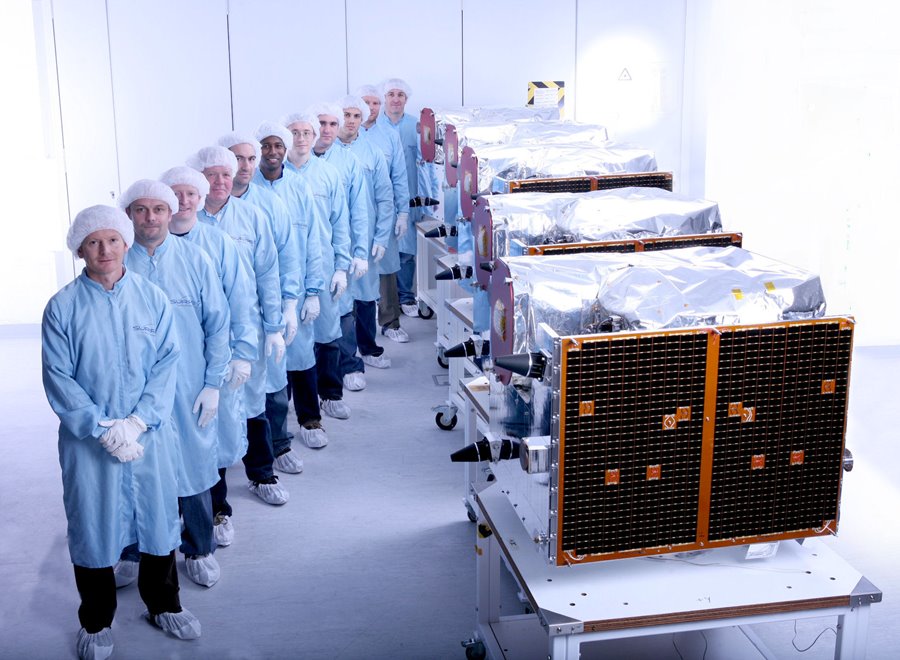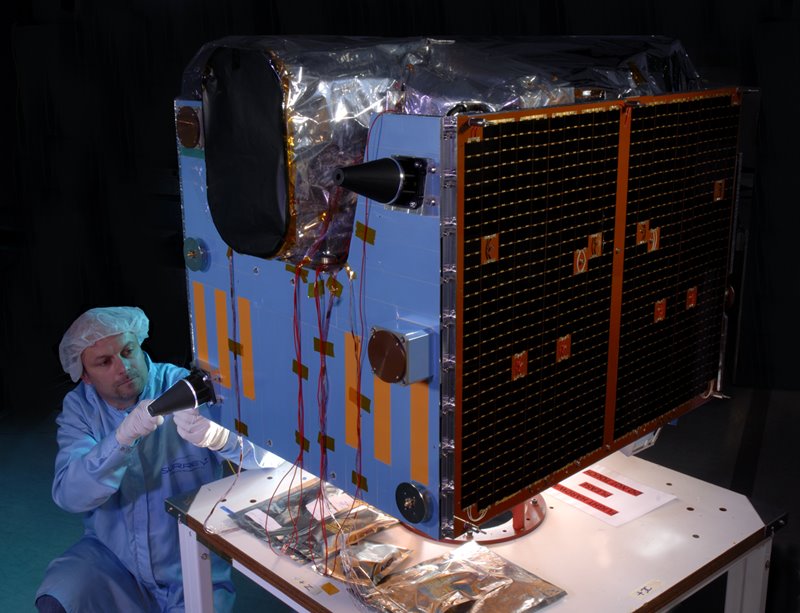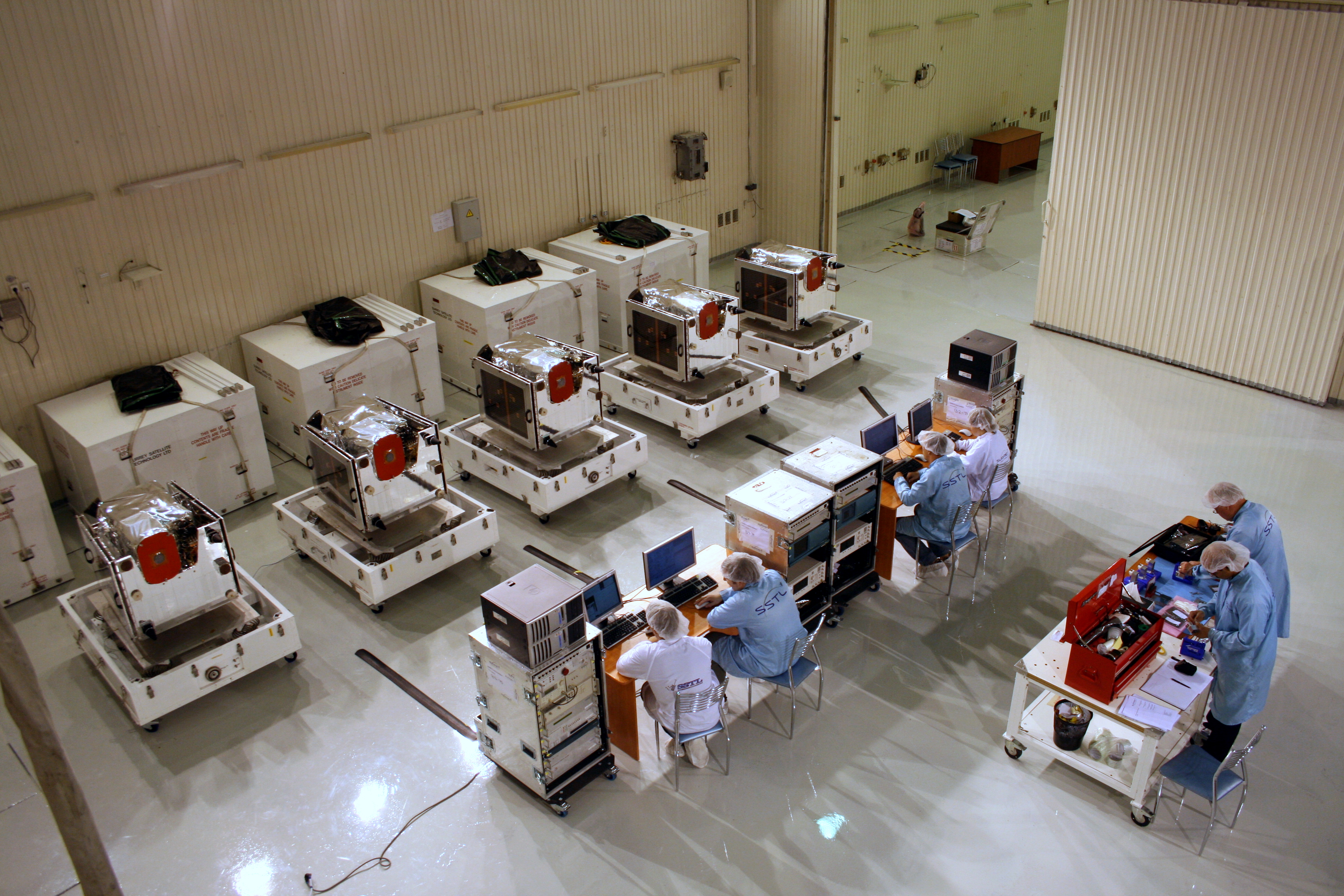
Last week Planet announced that they will be proactively retiring the RapidEye Constellation at the end of March 2020. It's the end of a landmark mission for SSTL - our first contract for a commercial constellation.
The RapidEye spacecraft have far exceeded their design lifetime of 7.5 years and all 5 spacecraft have remained fully operational to the end of their life, delivering high quality imagery that is still in demand. The RapidEye Constellation has generated the largest global archive of five meter satellite imagery to date and, according the Planet, they have:
- Orbited the Earth more than 305,000 times
- Traveled a distance of nearly 13,422,000,000 kilometers, which is over 89 times the distance between the Earth and the Sun
- Taken more than 660,000 pictures of Earth’s total landmass, which is equal to more than 15 billion square kilometers of imagery data

One of the RapidEye spacecraft platforms during final assembly at SSTL.
SSTL started working on the design and development of the RapidEye spacecraft as a subcontractor of MDA, who won the contract for the delivery of the 5 spacecraft constellation in 2004. This was the start of a successful working relationship, where the customer's concept and vision for the constellation was brought to life by SSTL, MDA and Jena Optroniks (who supplied the imager). SSTL were also involved in the delivery and installation of an S-Band antenna, which was installed on the roof of RapidEye’s premises in Brandenburg an der Havel.

The RapidEye spacecraft undergoing final tests at the launch site in Baikonur, 2008.
Following launch of the 5 spacecraft on a DNEPR rocket from Baikonur, 2 separate teams located in Guildford and Brandenburg worked to make contact with each of the five spacecraft, upload software and stabilise the craft until they had all achieved a nadir pointing attitude. This was followed by platform and payload commissioning, where a dedicated X-Band antenna (at KSATs premises in Svalbard) was used to allow for payload data download on every orbit, for each of the five spacecraft. Finally, an orbit phasing campaign was conducted, using a Constellation Management System, developed by SSTL to help plan the orbit manoeuvres. Once completed, all 5 spacecraft were equally spaced around the orbit, meaning that during periods of visibility, a new ground station contact started approximately every 20 minutes. The teams from SSTL, MDA and RapidEye all worked well together and although there were occasional tense moments, there were lots of fun and laughter too during the LEOP and Commissioning phases.
SSTL were also involved in the transition of operations in 2012/2013 from Brandenburg to the offices near Zoo station in Berlin and an upgrade of the rack at Svalbard to allow all S-Band as well as X-Band communications to be conducted through the KSAT antenna system.
During the 11 year lifetime of these 5 spacecraft, SSTL provided support to the spacecraft operations team located initially in Brandenburg and then in Berlin. This has included anomaly resolution support and tracking the spacecraft through SSTL's Guildford ground stations when the Brandenburg antenna was down for maintenance.
Over the years our engineers have formed strong bonds with colleagues from all the organisations working on this key Earth Observation mission, and we are extremely proud of our involvement and contribution to the RapidEye Constellation.
View Planet's press release with sample RapidEye imagery.